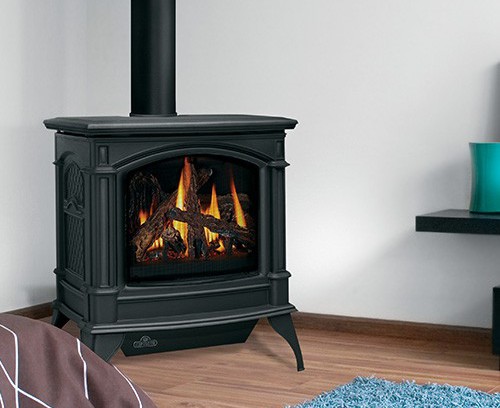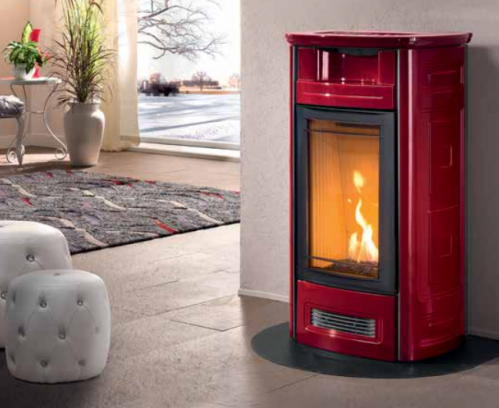Installing a direct vent gas stove is another way to add an ambiance of a fire to a place where there was no fireplace or stove before. Direct vent stoves function and perform the same way direct vent fireplaces do. The only difference between DV stoves and DV fireplaces is that the stoves are made to be free-standing and do not require any framing or finishing. This makes them suitable for spaces where fireplace may not have enough room to be installed and / or the costs of framing and finishing work need to be cut down.
DV stoves are also often used as an alternative to a direct vent gas insert and installed inside of an existing fireplace to get the maximum efficiency out of it. Similarly to DV gas fireplaces, DV gas inserts require a surround to make them look complete and cover the gaps between the insert itself and the fireplace; DV gas stoves do not need a surround, which makes them a good option for fireplaces that have an "odd" size or shape (i.e. very large, arched, etc.)
Direct vent gas stoves have a fixed piece of glass at the front and use the same type venting system as direct vent gas fireplaces, which makes them very efficient (70-85%+); they also have optional blowers that aid the distribution of the hot air around the room.
Direct vent gas stoves have very versatile looks with rock and glass burning media alternatives to conventional logs that would go well with virtually any style whether it be a cabin in the woods, a beach house or a contemporary loft.

Direct fireplace / stove with venting diagram courtesy of DuraVent
Notes on Venting of Direct Vent Stoves
Direct venting options are available for gas fireplaces, inserts, and stoves. Direct-vent products are sealed combustion appliances that do not interact with the air in your home except to efficiently provide abundant heat.
A two-pipe venting system carries the appliances burnt combustion gases to the outside for combustion purposes. The venting system is attached to the unit on one end and a termination cap on the other end, thus providing a sealed direct link between the unit and the outside environment.
In the case of a direct-vent stove, the venting system can terminate either vertically and/or horizontally between the unit and the termination cap. In the case of a direct vent gas insert, the venting system must run vertically through an existing chimney flue and be capped at the top of the flue.


